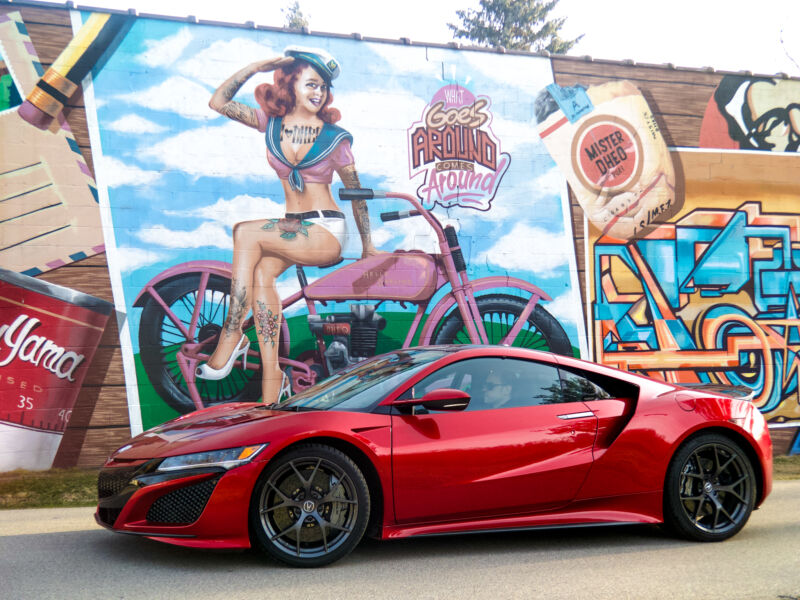1,200 uncomfortable miles in a gorgeous Acura NSX hybrid supercar

Enlarge (credit: Elle Cayabyab Gitlin)
For the last couple of years, I've wanted to spend some time with an Acura NSX. After all, it's a hybrid, which I like, and a supercar, which I also like. Despite a strong suspicion that I'd like a car that combined both of those things, for one reason or another the stars never aligned save for a brief 20 minutes back in 2017, which was not long enough to really form an impression. But in January, Acura asked me and three other journalists to ferry four NSXes from Ohio, where these mid-engined hybrid supercars are built, down to Florida. The only catch: we had just two days to get there-a distance of about 1,200 miles (1,931km), according to the route we were to take.
It's not like the first oneHonda, which owns the Acura brand and uses it for high-end US vehicles, introduced the NSX in 1990, and it really did shake up the established order. Until then, the mid-engined sports car had mainly been the preserve of small European outfits, most notably Ferrari. The cars looked great and sometimes handled well, but they were expensive to buy and expensive to maintain. The NSX proved you could have your cake and eat it, too. It looked the part, with relatively simple but elegant lines that left no doubt as to where the engine was in relation to the driver, along with a black roof meant to evoke the canopy of an F-16 fighter jet.
The car was a technological tour de force, with a lightweight aluminum construction and a high-revving, naturally aspirated 3.0L V6 engine mounted sideways behind the cabin. It made more expensive cars like the Ferrari 348 look positively antiquarian by comparison. In addition to the car's F1-inspired tech, Honda even recruited F1 drivers Ayrton Senna and Satoru Nakajima to help hone the car's handling on track. The first-generation NSX lived on until 2005, and while it never sold in massive numbers, it became a cult favorite thanks to video games like Gran Turismo.
Read 27 remaining paragraphs | Comments